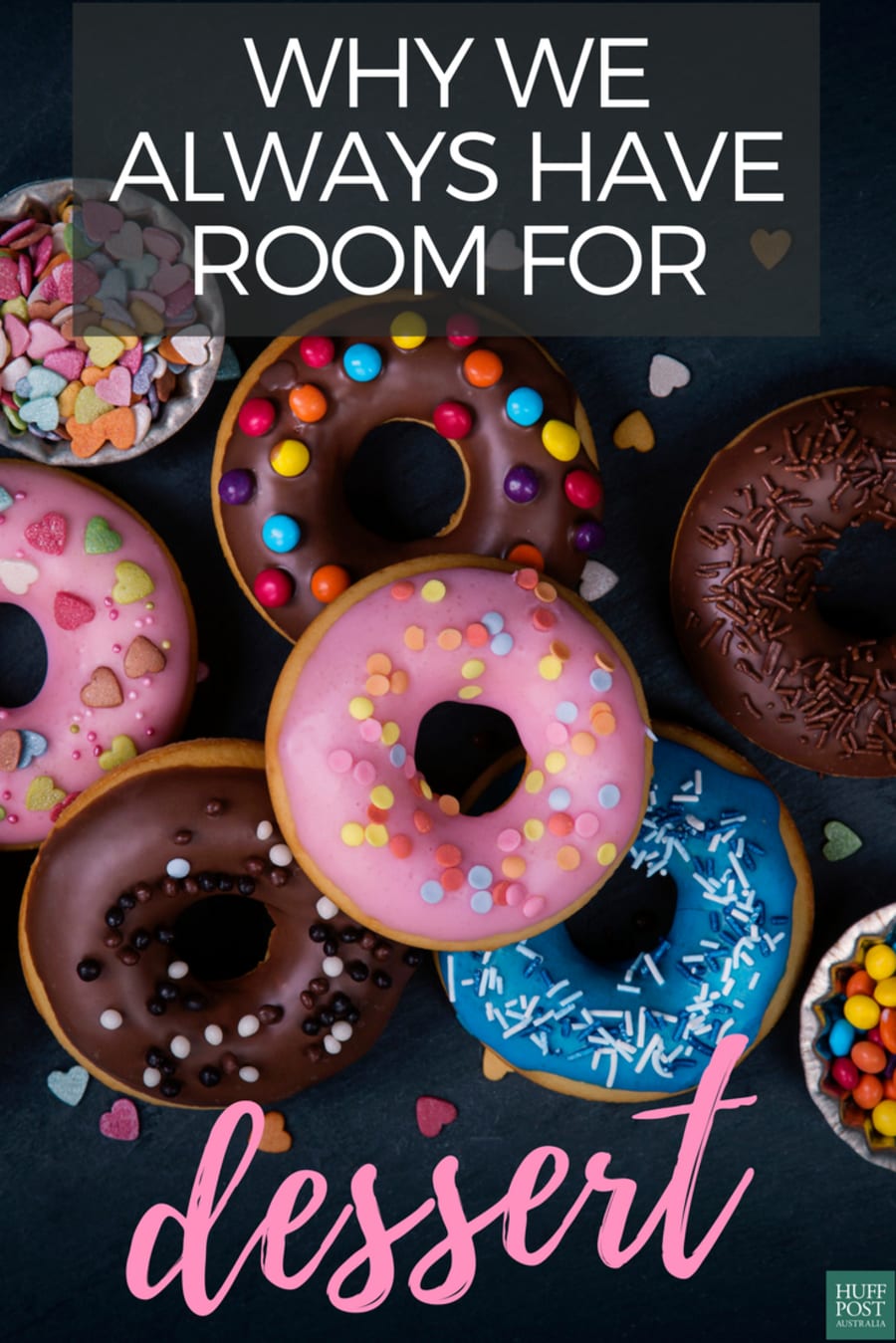So, There’s A Scientific Reason Why We Always Have Room For Dessert
‘Dessert stomach’ is a real, miraculous, diet-ruining thing.
Dessert stomach. We’ve all experienced this gustatory sensation. It only happens every damned time we eat a meal. It’s basically part of the human condition.
You eat a delicious, satisfying dinner, feel full to the brim, but when the beautiful question ‘Should we get dessert?’ comes around, it’s always a yes — much to our stomach’s dismay afterwards.
It’s true, we always have room for desserts, whether we indulge that sensation with dessert or not (kudos if you have the willpower). But why exactly does this happen?
According to Russell Keast — a professor in sensory and food science and the director of the Centre for Advanced Sensory Science at Deakin University — there’s a scientific reason for the phenomenon called sensory specific satiety, or ‘dessert stomach’.
“A major part of the reason is a phenomenon known as sensory specific satiety. Basically, this is what we experience when we eat one food to fullness. Our senses tell us we are no longer wanting to eat any more of that specific food. In other words, we are full,” Keast told The Huffington Post Australia.

“Part of the response is actually sensory boredom — the food that excited us with promise of flavour delights is now boring. We are getting satiated, but combine this with the fact that our flavour sensing system is overloaded with the food’s flavour helps us stop eating.
“Then you present a dessert, a new flavour experience, a different profile to what we are bored with. It may look and smell good and (from experience) we know sweet is appealing. No more boredom with the food and the anticipation creates appetite — hence the dessert stomach.”
In layman’s terms, dinner is boring compared to the treat that is various ice creams, cakes, cookies, chocolate and lollies. And our brains recognise this and even override satiety signals (that ‘full’ feeling) for pleasure (i.e. dessert).
“Satiety signals are overridden by the pleasing anticipation of the new food,” Keast said. “If the same food was presented, the desire to consume more of the same is not present.”
Keast has actually researched and tested this phenomenon, and the results are fascinating.

“To assess sensory specific satiety (SSS) we provide participants in our sensory tests with 300ml of a strawberry milkshake (or any flavour or any food),” Keast explained.
“We state you must eat the entire portion in two minutes. After the forced intake we then provide the same food to excess, so 700ml of the strawberry milkshake, and ask the participant to have as much or little as they like. We measure the volume consumed and the time taken.
“On the participants’ next visit we provide the same 300ml of strawberry milkshake to be consumed in two minutes. But then we give them 700ml of chocolate milkshake (another flavour) and ask to consume as much or little as you like.
“The difference between the volume of chocolate milkshake and strawberry milkshake consumed is a measure of SSS. The new flavour is invariably consumed significantly more than the same flavour.
“It is also important to note that the food has be appealing to the consumer for the effect to show. If you have eaten to sensory specific satiety and the new food presented is not appealing, you may decide not to consume the new food.”
On top of this, our stomachs can actually get used the eating past the initial ‘full’ feeling, meaning you need more food to feel satisfied — which isn’t the greatest for your waistline.
“Yes, our stomach and physiology have an ability to adsorb nutrients and energy to excess. Presumably this was a great survival mechanism — in times when food was plentiful you could eat and your body would store what it could,” Keast told HuffPost Australia.

“This would help in times of famine. This mechanism is not so great if you live in times when food is readily available and often affordable. The stomach also has flexibility in its ability to accept food — sweet compounds help the stomach relax and take in more food.”
We all know eating past that initial full feeling (ahem, eating a huge doughnut) doesn’t make us feel well. We become bloated, uncomfortable and sometimes even nauseated. So, why do we never learn?
“You think we should! We feel uncomfortably full because we have eaten too much and our system allows this,” Keast said.
“As the sweet dessert has relaxed the stomach and allowed greater capacity, when it decides to constrict it can create uncomfortable feelings. Your body is doing what it can to push through digestion and the uptake of nutrients, but they are also sending signals to the brain to stop eating.
“But as we know, there is a delay from swallowing the food and the uncomfortable fullness. Why don’t we learn — possibly because it is not a critical-to-life illness, just a function of plentiful times. Again, our biology from millions of years of evolution ensure we can absorb foods when they are plentiful.”
Damn you, tasty doughnuts, for being so plentiful.
Related
Discover more from ReviewFitHealth.com
Subscribe to get the latest posts sent to your email.